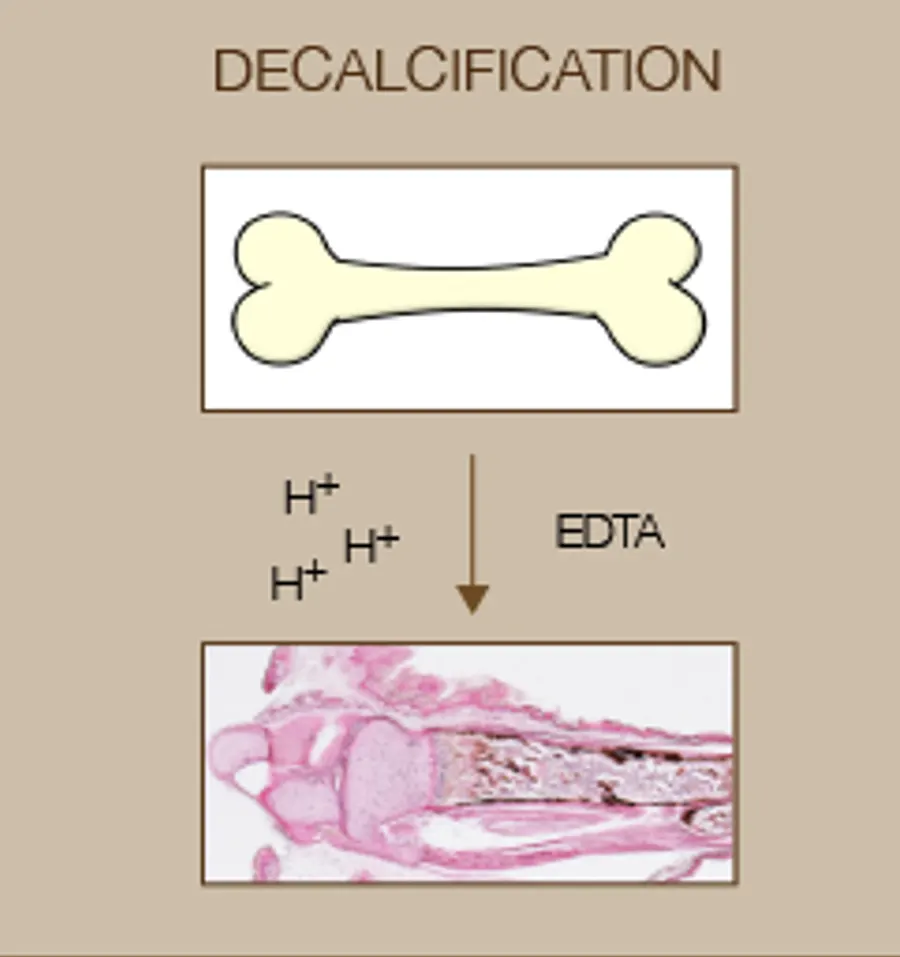How do I know when the decalcification process has been completed?
Tissue decalcification is an essential process for analyzing bone, calcified tissue, teeth or cysts containing calcium deposits. In fact, calcium greatly impedes, if not render impossible, the cutting of paraffin-embedded tissue blocks.
The tissue must first be fixed to preserve it properly before decalcification can take place. A variety of solutions are available to achieve this result. Sometimes they are selected based on speed of processing, sometimes on the basis of what tissue is analyzed. But one constant is that we look for a solution that won't damage the tissue.
It is a long and tedious process that takes more days than hours. What's more, decalcifying agents are generally rather aggressive chemicals, so it's best to remove tissues from them as soon as possible to avoid damage, as well as certain changes to the tissue’s characteristics, such as its affinity with certain dyes. It is therefore essential to determine the end point of this procedure.
Several methods exist and are used for this purpose;
- Observation: when no more bubbles form in an acid solution, it's probably all over. Rather random and imprecise, this method requires confirmation.
- Tissue X-ray: extremely accurate, this method is impractical to apply routinely due to difficult access to instruments and the cost of the tests involved.
- Touching: rather imprecise, this technique, though rapid, requires a certain expertise and has the potential of damaging the tissue.
- Prick: using a needle or prickly object, prick the tissue in various places. Resistance shows incomplete decalcification, but this method is clearly traumatic for the tissue.
- Cut: using a scalpel, cut the tissue and analyze the results in the same way as with pricking. This works if you have to cut the tissue anyway, and is less damaging than needling as the blade can leave a cleaner cut.
- Flexion & Torsion: frankly... yes, it'll give a rough idea of the tissue’s flexibility, but unscientific and damaging to tissue.
- Chemical: determines whether there is calcium left in the decalcification solution. With the right reagents, this precise and easy-to-use method gives a clear and definitive result, even when using EDTA. In the event of a positive result, simply replace the decalcification fluid and repeat the test at least three hours later.
Histology does essentially the same things today as it did 150 years ago. That's not to say we should use the techniques of yesteryear, and when technology allows us to move forward, it's probably wise to switch to new methods that offer more accurate and reproducible results.
Q: Why is determining the end-point of decalcification important?
A: To prevent tissue damage from prolonged exposure to decalcifying agents while ensuring complete calcium removal.
Q: What methods exist?
A: Observation, radiography, touch, puncture, cutting, bending, and chemical testing.
Q: Which method is precise and minimally damaging?
A: Chemical end-point testing, which detects residual calcium in the decalcifying solution.
| 470, avenue Laurendeau, Montréal-Est (Quebec) H1B 5M2 | |||
| Phone: | 514 498-3620 | Toll free: | 833 498-3620 |
| Email: | chaptec@chaptec.com | ||


